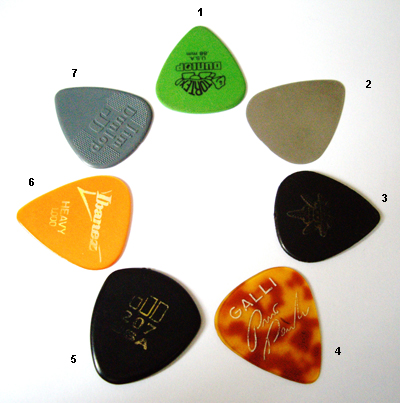Sometimes in my stumbleupon sessions I ‘stumble’ on some strange guitar videos…I decided to post a few for your amusement. Enjoy!
Electric Whisk
Drill
Pencils
Cat

Sometimes in my stumbleupon sessions I ‘stumble’ on some strange guitar videos…I decided to post a few for your amusement. Enjoy!
Electric Whisk
Drill
Pencils
Cat
When I am not playing gigs, I like to go to live music events of different genres and different levels…after a while, tired of seeing the same things done wrong over and over I thought of writing this short post.
So there you go: 5 mistakes a live musician should never make!
1. Noodling Before/Between Tunes
Very unprofessional, it will make you look like you have been playing for less than a week. It usually also gives away the tune that you are about to play which ruins the surprise effect on the audience. Bad Bad Bad! Even tuning nowadays can be done without making a sound (no excuse to be out of tune ever!).
2. Long gaps between tunes
Oh lord…seen too many times (what are we doing next?). It is ok for a last minute change, but this is the reason why there are setlists!! Each member should have one printed big enough to be read with very little light. Even a last minute show with people you never played with should be as close to a real show as it gets. No setlist? Think of what tune to play next while you are still playing!
3. Being Late
It’s not ‘fashionably late’. It’s just late. And it is not good. You don’t need to be there six hours before a gig, but I find that half hour preceding the start is vital to make sure everybody knows what’s going on, to make last minute changes or to make a good setlist if you are playing a last minute function, and to check that all your gear works.
4. Not bringing spares
You need and extra guitar, extra strings, basic tools to fix a last minute gear problem. Nowadays even a dead amp can be replaced with a small multi-fx with speaker simulator, plugged into a PA…regardelss if you like the tone or not, it will get you to the end of the gig.
5. Entertain
Because it is not fun to look at four guys staring at the floor for two hours, no matter how good you music is or great you are. Thank the crowd for coming to your gig, and the staff at the venue…they will remember.
In the realm of music, every nuance matters, from the subtlest strum to the most intricate riff. Often, we lavish our attention and resources on pedals and other equipment, while overlooking one of the unsung heroes of our musical journey – the humble guitar pick. Recently, in a fascinating exploration, I delved into the world of guitar picks, realizing their profound influence on our tone and playability. Join me on this sonic adventure, as I tested 12 carefully selected picks to unravel their secrets.
The Quest for the Perfect Pick
Having amassed a collection spanning three decades, I meticulously handpicked 12 contenders based on their size, material, and shape. My go-to pick, the D’Addario Delrin 88.8, served as the benchmark for comparison. The selection varied from the robust 1mm triangular Gin Dollop to the feather-light Galley pick, each promising a unique experience.
Unveiling the Picks
Decoding the Sonic Symphony
The experiment involved a symphony of arpeggios, single notes, and simple chords, each pick composing a distinct melody. Thicker picks serenaded with pristine single notes, while their thinner counterparts danced gracefully across chords, creating a harmonious blend.
Your Turn to Tune In
As our sonic expedition concludes, I invite you to share your thoughts. What picks resonate with your soul? Are you drawn to the bold resonance of thicker picks or the delicate dance of their thinner counterparts? Have you stumbled upon a pick that feels like an extension of your musical identity?
(old video on picks)
These are the picks I have used during this lesson:


Very simple concept widely used in jazz ( but good for other styles). Like shown in the video, G7 and Db7 are two chords a tritone away (tritone=6 semitones) that share the same 3rd and 7th.
G7= G B D F
Db=Db F Ab B
as you see the notes B and F are common to the two chords. This means that I can also substitute the IIm chord that usually comes before it (as in a II-V-I)
I can play both
Dm7 G7 Cmaj7
Abm7 Db7 Cmaj7